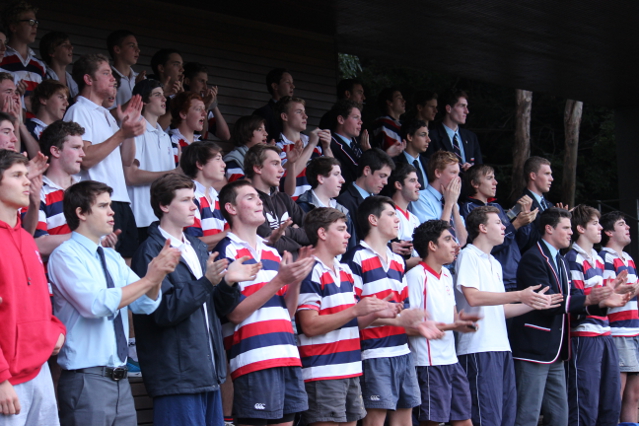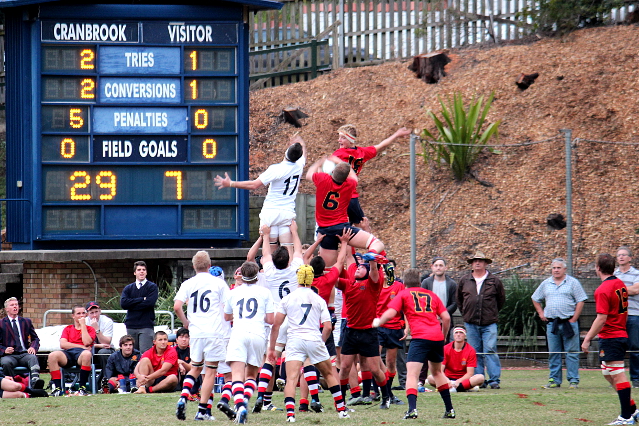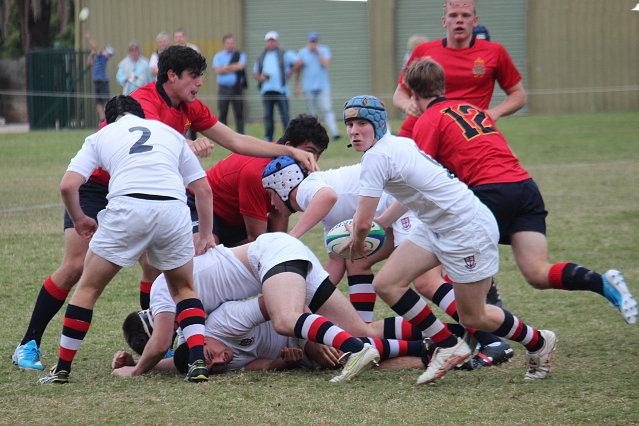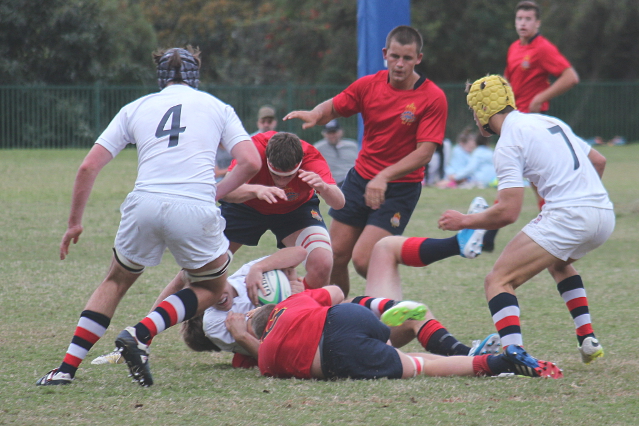It was 1994 when Cranbrook last got its hands on the Plume Shield.
Remember 1994? Paul Keating was Prime Minister; John Fahey was Premier of NSW; Cathy Freeman was a star at the Commonwealth Games; and Australia tried out a new scrum-half, one George Gregan, in a Test against Italy in Brisbane.
Twenty years is a long time between drinks but, Cranbrook being Cranbrook, the drinks will be of excellent quality, and they’ll go down even better for having been cellared for a while.

There’s an uncharitable point of view being expressed in certain quarters that Cranbrook did not win the Plume Shield this year but, rather, Knox lost it. That’s nonsense. Yes, Knox had a heap of talent, and unrivalled points-scoring ability. And, yes, Knox took Cranbrook apart in the second half when the two schools met at Wahroonga in Round 9.
But competitions aren’t won by running up tall scores or dominating one half of a game. Good as Knox were (and they were a very good side), they didn’t quite match Cranbrook for consistency over the gruelling home-and-away season. The team that wins the most games over the course of the ten rounds deserves to be the premiers, and this year Cranbrook thoroughly deserved its title.
One reason why Cranbrook’s premiership has been acknowledged almost grudgingly is that while they won, they didn’t win in quite the style in which Australians like their rugby teams to win. There’s a generation of Rugby followers who were spoiled growing up watching the Ellas and David Campese, and who seem to think that a win only counts if it’s achieved by running the ball from everywhere, and treating the forward exchanges as a necessary preliminary to setting the backs loose.

Cranbrook didn’t have the players to play that way. Its game was heavily forward-based: Cranbrook had the best scrum in the competition, a good line-out, and a huge but mobile back row. So they controlled the first phase, held on to possession, and played for field position. When they had a chance to kick penalties, Sam Renton knocked them over. It was sometimes quite attritional, but so what? Successful teams use the resources they have to win games. Forward power plus the accuracy of Renton’s boot was a very hard formula to beat.
Which is not to say that this was all that Cranbrook had in its favour. The defence of the backline was excellent. Very few sides got through there. In the first seven matches, Cranbrook conceded only eight tries. In attack, the backs were more limited, essentially because there was very little penetration in the centres.
But Renton has a good step, and could break the line, while there was plenty of pace out wide to finish off any opportunities, especially when Edelstein got the ball. Almost every player in the side was an effective ball-carrier, as was demonstrated when Trinity was demolished 81-8.

To compensate for a lack of line-breakers in the centres, Cranbrook liked to stand big No8 Makas in the centres and set him loose on the smaller defenders – another example of how this smart side played to its strengths.
In summary, Cranbrook was well coached (by Head Coach James Boyd), well led by Tom Mahoney and Australian Schools representative Hugh Summerhayes, and went within one game of an unbeaten season. The team deserved its premiership.
The result means, incidentally, that a boy who entered school in Year 7 in 2009 will have seen five different Associated Schools 1st XV premiers in his six years at school.
Here’s a quick run-down on how the six schools fared:
Cranbrook
Played ten, won nine: a first premiership for twenty years. A great forward pack, strike power out wide, an excellent goal kicker, but most important of all, each player knew what his job was and made sure he did it.
 Man for man Cranbrook might have been less talented than Knox; as a team, though, they were better over the course of the season. Flanker Hugh Summerhayes became his school’s first Australian Schools’ representative in fifteen years, but wasn’t very far ahead of captain Tom Mahoney and no.8 Nick Makas in terms of impact. Prop Tom Hill had a tremendous season in the tight and with some barging runs – he sparked the demolition of Trinity with three tries.
Man for man Cranbrook might have been less talented than Knox; as a team, though, they were better over the course of the season. Flanker Hugh Summerhayes became his school’s first Australian Schools’ representative in fifteen years, but wasn’t very far ahead of captain Tom Mahoney and no.8 Nick Makas in terms of impact. Prop Tom Hill had a tremendous season in the tight and with some barging runs – he sparked the demolition of Trinity with three tries.
Sam Renton earned a NSW Seconds jumper, kicked goals from everywhere, and posed a constant threat to the defence. High points were the pounding of Trinity at Rose Bay and the last-minute penalty that earned a crucial win over Knox in Round 5. Low points? Only one, the second half at Wahroonga.
Verdict: Five snorts out of five.
Knox
Second place, eight wins.
Knox racked up 445 points in ten games (29 short of Trinity’s 2011 record) and allowed only 141 – to put that another way, on average they won each game by 44 to 14. Unfortunately, averages don’t win games, and the losses to Cranbrook (by three points) and Waverley (by two) consigned Knox to second place when they would have expected better.
Consistency – and goal kicking at vital times – let them down. But Knox was a tremendous side to watch. Fit, well-coached and full of attacking intent, they used the ball excitingly well.
 Hooker James Widders-Leece was a dynamo, scoring 17 tries to set a new CAS 1st XV record. Not all of them were hooker’s tries (head down, two metres out) either –a superb runner in broken play, he often ran past the opposing backs on his way to the line.
Hooker James Widders-Leece was a dynamo, scoring 17 tries to set a new CAS 1st XV record. Not all of them were hooker’s tries (head down, two metres out) either –a superb runner in broken play, he often ran past the opposing backs on his way to the line.
Connor Watson was the outstanding back in the competition, a fast, beautifully-balanced centre. He might have scored more than his twelve tries had Knox not moved him into no.10 for the last few games. Brett Van Zyl and Jake Pierce were tireless in the back row, and Lachlan Swinton was an intimidating presence in the second row.
High points: dominating Cranbrook at Wahroonga. Low point: the loss to Waverley in Round 6.
Verdict: a four-snort season.



